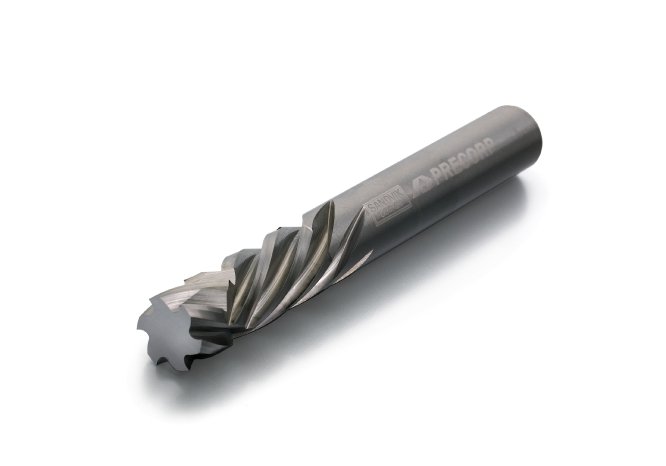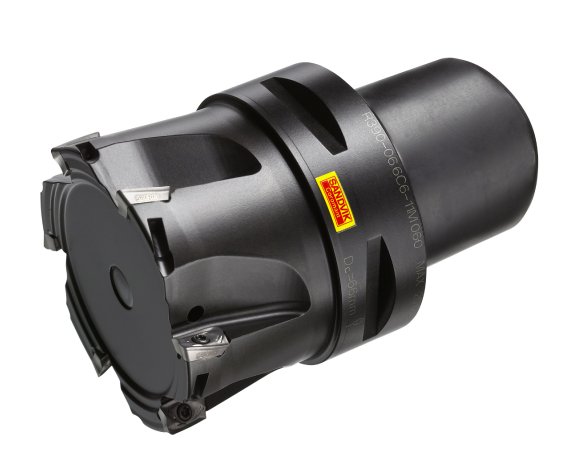Look to the skies
In 2013, however, the aerospace industry remains the dominant source of machining applications for composites. Indeed, there is potential for composites use in this sector to expand a further 50% in the coming four years. Drilling and milling of wing skins, central wing boxes and vertical tail components, for example, continue to challenge production engineers and suppliers of manufacturing technologies.
Such parts are typically CFRP composite, or CFRP stacked with aluminium or titanium layers, or both. Complicating the situation further is the range of machine types deployed to process these materials. Around 40% of applications are undertaken by power feed machines or ADU (automatic drilling unit), while 35% use hand-held machines and 25% of tasks are completed by CNC machine or robot.
The rule of thumb, therefore, is that careful tool selection is required for each application taking into account both the material and the machine tool, as well as factors such as quality requirements and volume.
Proven union
Through its established partnership with Precorp, a specialist company with a long track record in composites machining, Sandvik Coromant has many existing tooling solutions available for use by today's aerospace manufacturing community.
For instance, geometries such as 452.1 uncoated carbide are available for hand drilling of CFRP composites used on airframe structures, while for CFRPs stacked with titanium, CD10 series PCD vein drill technology is a preferred choice when using power feed or CNC machines. From a milling perspective, existing successful solutions include CoroMill 590 for surface milling applications, CoroMill Plura S215 for milling and edging, and CoroMill 390 for Sturtz milling, a fast machining strategy that involves tilting the tool relative to the component surface to create an elliptical cutter path.
Tried and tested
Sandvik Coromant has many specific aerospace machining examples that highlight the potential benefits on offer. For instance, take the drilling of wing boxes made from carbon fibre/titanium stacks. These components are processed typically using pneumatic power feed machines and require reduced burr on exit and good surface finish. Shown to achieve excellent hole quality and consistent manufacturing with 90-hole tool life (9.525 mm diameter, 12 m/min cutting speed, 0.05 mm/rev feed) is the use of Sandvik Coromant/Precorp CD10 diamond veined tipped drills with 86PT point geometry.
How about the edging of a vertical tail carbon fibre skin? Well, demands here include good surface finish with Ra value of 1.25 μm and minimal splintering. The best performing tools for such applications are CoroMill Plura engineered solutions, either a diamond coated carbide cutter or a PCD brazed cutter, typically around 10 mm in diameter with two cutting edges. Using a tool of this type will permit 10,000 rpm spindle speeds and table feeds of around 3,200 mm/min.
Similarly, any aerospace manufacturers performing surface machining on primary structure carbon fibre wings or wing-boxes should look no further than CoroMill 590 with CD10 PCD inserts. This will allow cutting speeds in the region of 300 m/min.
Research focus
Solutions such as these have been developed at a number of worldwide research facilities established by Sandvik Coromant. Aside from the company's headquarters in Sweden, Europe also boasts a Composite Application Center in Orléans, France. Here, class leading equipment is available for extensive customer support, including a five-axis CNC machining center, power feed machines and hand-held drills covering the entire rpm range. The power feed and CNC machines also feature Mitis vibration-assisted drilling units, which offer the capability to break chips into small fragments and therefore negate the previous need for peck drilling routines. The upshot is greatly reduced cycle times.
In the UK, Sandvik Coromant also has an R&D facility at the University of Sheffield's Advanced Manufacturing Research Center, which is working on many new developments for composites machining. Here, research is continuing using techniques such as tomography analysis, temperature measurement and high speed camera inspection.
Combined helix
Among the latest tools to emerge from the Sandvik Coromant R&D facilities is the new CoroMill® Plura compression end mill for composites. This combines positive and negative helix design to 'compress' the top and bottom of the component edge and so minimize any opportunity for splintering, a common defect when machining CFRP and many other types of engineering composites.
Suitable for edge milling applications on material with a minimum thickness of 6 mm, the new compression end mill offers micro-geometry with six cutting edges for surface finishes (Ra) of well under 4 µm and high material removal rates. Conventional up-milling strategies are recommended as these give less vibration. Other tips include keeping the split-line in the middle of the material.
Strong track record
The new Plura compression end mill is likely to prove a resounding success, just like many other developments before it. Arguably the biggest cutting tool advance for composite materials in recent years has been vein technology. Here, diamond edges are integrated in a cemented carbide tool to make optimal use of hard, wear resistant cutting edge within a tough drill shank. The PCD vein manufacturing process pre-creates geometry suited to the application and workpiece material. PCD in powder form (with selected grain size) is subjected to a special high pressure, high temperature process to centralize the vein in the carbide.
Vein technology allows for variations in cutting geometries that were impractical or even impossible to achieve with conventional PCD-bit processes. Vein technology also allows variations in tool design to cope with everything from unstable set-ups through to rigid, high volume applications with precision holes.
Ultimately, the future looks extremely bright for manufacturing technologies in the composites machining sector. Current research at Sandvik Coromant includes projects examining orbital drilling, edging solutions (low helix), CFRP stack machining simulation and the ongoing study of wear mechanisms in CFRP composites. Equipped with the enabling technology, there will be no limit to what aerospace manufacturers and other companies machining composites can achieve in the years ahead.
Please download both high and low resolution images from here:
http://www.pinnaclecrc.com/...



